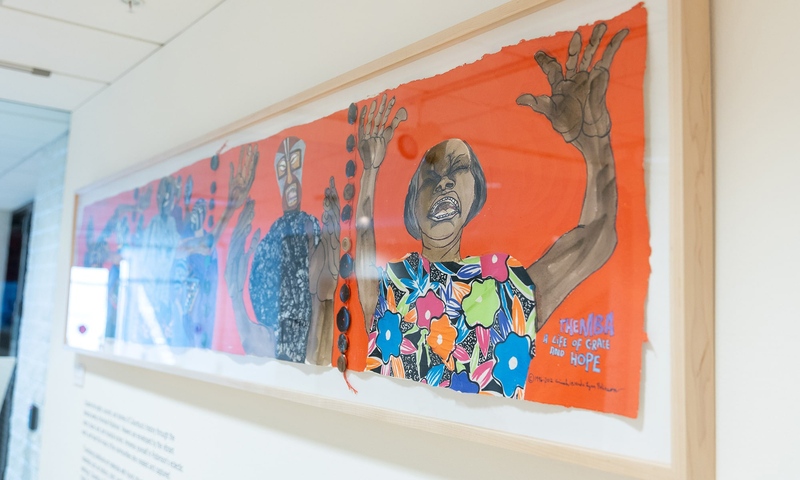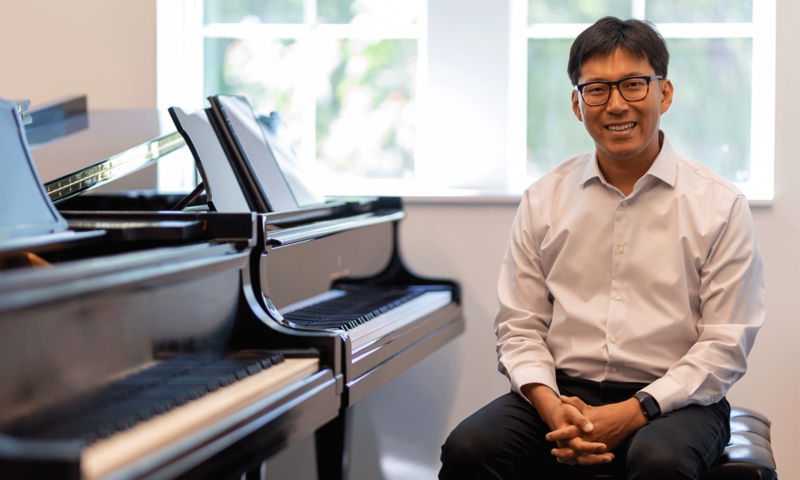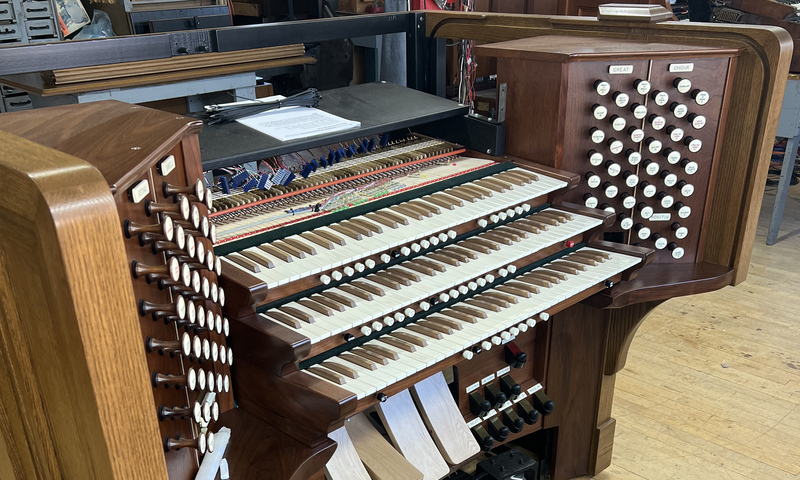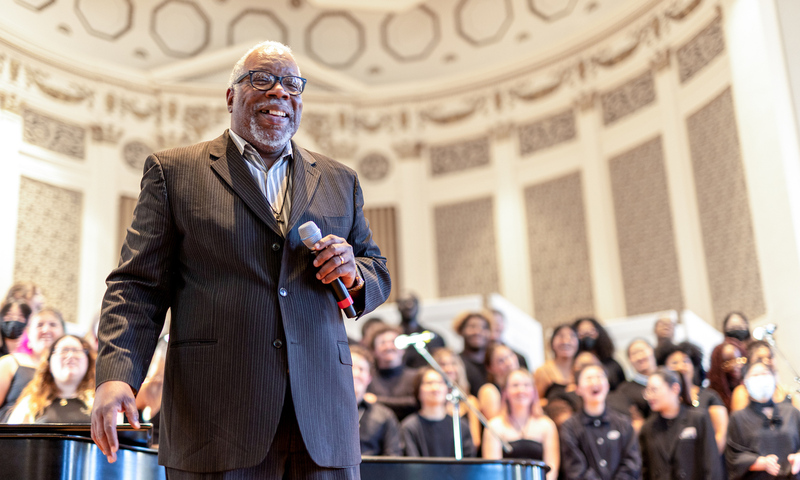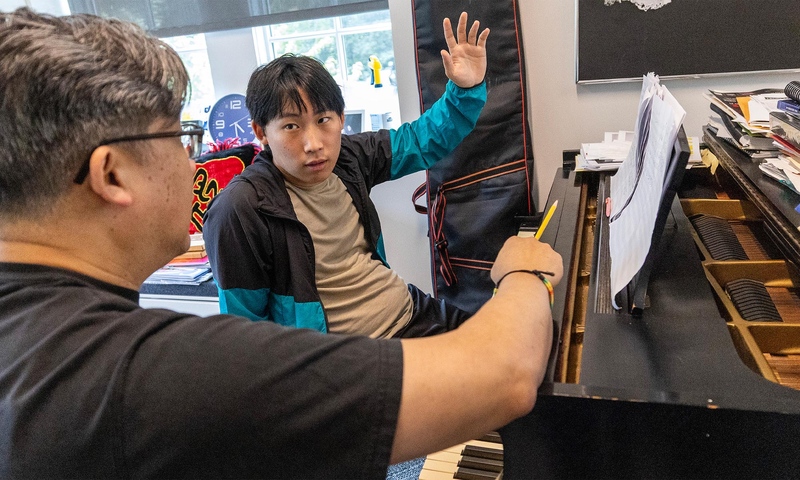For four weeks, visiting artist Liz Roberts worked with professor Marc Wiskemann’s “Mastering Mise-en-Scène” class to plan, build, and execute an expanded cinema installation. Called “Hoist,” the installation was on view in the Mulberry MIX Gallery from December 3 – December 7, 2015.
The installation is part of Liz Roberts' “Transportation” body of moving image work.
In Roberts’ own words: “Movies are a form of transportation, and within them, modes of transport such as cars and elevators are often used to move narrative forward. Cinema requires a willing suspension of disbelief; so does stepping into a box suspended from a cable that will hoist you into the air.”
“Hoist” consisted of two rear-projection screens that viewers stood between as a simulated freight elevator. Viewers could control which “floor” to transport to by pressing an (in-real-life defunct) elevator button panel. The elevator travels up and down, depending on the floor selected; and, each floor revealed a different world in the form of a video vignette made by one of the students in Wiskemann’s class. Wiskemann, Roberts, and other Cinema faculty and staff contributed vignettes as well.
The vignettes and installation reflected a culmination of studies from the “Mastering Mise-en-Scène” course, which focused on creative control over elements within the film frame and their presentation. Locations, actors, props, wardrobe, lighting, and composition are prioritized, rather than narrative structure. In “Hoist,” each floor’s stop revealed its destination for 20-30 seconds, showing only glimpses of happenings instead of full plots or events. The places and (sometimes bizarre) spaces included a forest, a beach, a parking lot, a parking garage, a rooftop, a meditation room, an apartment, and even the deep sea. Additionally, as viewers traveled, choosing for themselves which floors to move to, expectations of narrative order were suspended. Viewers, not the filmmakers, held control over the juxtaposition of moving imagery.
As an expanded cinema installation, “Hoist” provided viewers with an experience different than that of a traditional movie theater. Viewers could move around the gallery space, unbound by rows of seats. The projectors were not hidden in a projection booth, so people could move in and around the projectors’ light − often interrupting the images with their shadows. With the elevator panel, viewers not only watched what was happening on screen, but they interacted with it by selecting each floor. Lastly, since the back of the screens gave a flipped view of the images, viewers had not one, not two, but four different perspectives of the vignettes and elevator.
“Hoist” showcased the collaboration among Cinema students and faculty as much as their individual artistry. It provided members of the Denison and local communities a different cinematic experience than traditional movie going, reflecting the diversity in film form and presentation. Ultimately, “Hoist” merged the cinema and gallery space into one.
